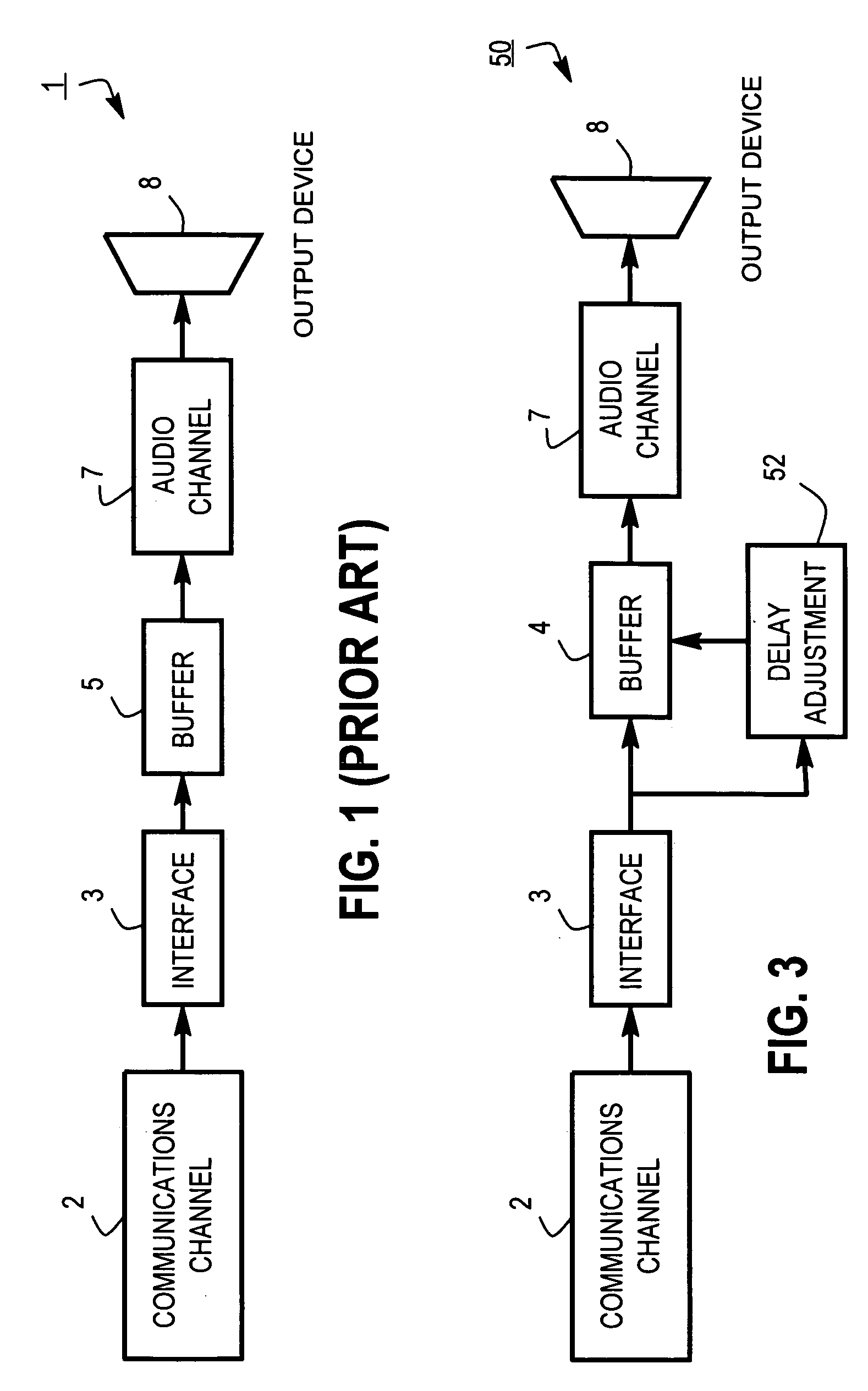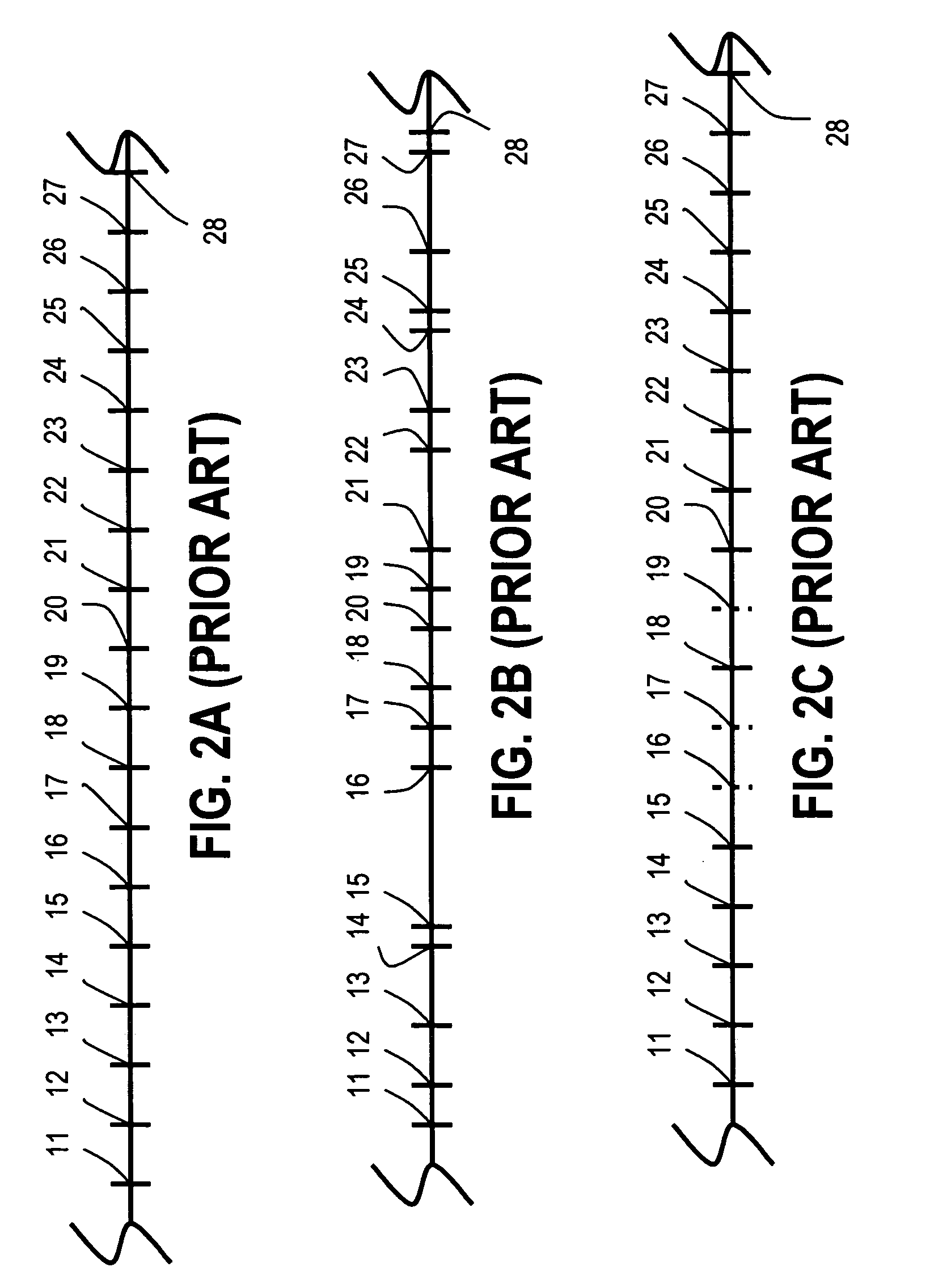Audio receiver having adaptive buffer delay
- Summary
- Abstract
- Description
- Claims
- Application Information
AI Technical Summary
Benefits of technology
Problems solved by technology
Method used
Image
Examples
Embodiment Construction
)
Controlling Jitter Buffer Delay.
[0045] In this section, we discuss certain concepts in connection with controlling jitter buffer delay. We begin with a simple statement. If neither transmitter, network nor receiver are losing or changing the order of audio, then one-way delay may only grow in time.
[0046] Indeed, if A0 and B0 are some points in a source audio (transmitter input), point B0 is after point A0; A1 and A0 are corresponding points in the receiver output audio and T(X) is the time of event X, then
T(B1)−T(A1)≧T(B0)−T(A0),
[0047] because all audio that filled time segment [T(A0), T(B0)] is now in segment [T(A1), T(B1)]. That means
T(B1)−T(B0)≧T(A1)−T(A0),
[0048] which proves the statement.
[0049] That is not absolutely true in the digital case because the transmitter and the receiver can have different timers. However, it is close to being true, at least if we are assuming that their clocks are synchronized, in order to simplify the analysis.
[0050] When the jitter buffe...
PUM
 Login to View More
Login to View More Abstract
Description
Claims
Application Information
 Login to View More
Login to View More - R&D
- Intellectual Property
- Life Sciences
- Materials
- Tech Scout
- Unparalleled Data Quality
- Higher Quality Content
- 60% Fewer Hallucinations
Browse by: Latest US Patents, China's latest patents, Technical Efficacy Thesaurus, Application Domain, Technology Topic, Popular Technical Reports.
© 2025 PatSnap. All rights reserved.Legal|Privacy policy|Modern Slavery Act Transparency Statement|Sitemap|About US| Contact US: help@patsnap.com



